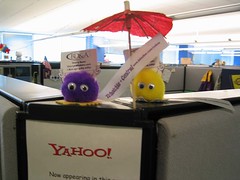 Who do you want to be? An employee, self-employed, a business owner or an investor?
Who do you want to be? An employee, self-employed, a business owner or an investor?
Each is a significantly different way of viewing oneself. It is possible to be in more than one role too. Robert Kiyosaki describes these roles in Cashflow Quadrant: Rich Dad’s Guide to Financial Freedom as:
- Employee
-
A person who earns money by holding a job and working for someone else or a company.
The majority of a population has an employee mindset. They wake up, work hard, get a paycheck, and go to sleep. There’s nothing wrong with that; it’s a very honorable lifestyle. Unfortunately, it often leaves them financially insecure or, if they’re smart about saving up and investing appropriately, financially secure. While this role used to carry little risk, nowadays, layoffs have removed the guarantees this role used to afford.
- Self-Employed
-
A person who earns money working for him/herself.
Some people decide to strike out on their own, to start their own business. They become self-employed entrepreneurs. Maybe they work alone as a freelance designer, business consultant, or financial accountant. Maybe they hire some employees and operate a cafe, a furniture store, or an ecommerce business. Whatever the case, they are now their own boss. Their lifestyle is characterized by lots of hard work and specialization in their chosen field. For their effort, the financial benefits can be greater than that of an employee; financial comfort is a more realistic goal. The risks are higher too. Self-employed entrepreneurs often leverage most or all of their personal savings to launch their business. If it fails, they risk bankruptcy.
- Business Owner
-
A person who owns a business that generates money.
Few others decide to become business owners. This is more than just being a self-employed entrepreneur. The business owner entrepreneur has less control than the self-employed entrepreneur, because it involves sharing & delegating responsibilities & ownership with others. In some cases, business owners don’t even work on a day-to-day basis and have a manager run the operation. Although they don’t have to work very hard anymore, business owners need to be intelligent about how they structure their business. Fortunately, this extra free time allows them to strengthen their business acumen, which is where they apply their knowledge, as opposed to specializing in their chosen field. The financial rewards are high – financial comfort and financial wealth are in their grasp. The risks can be high too, though intelligent business owners learn how to shelter themselves appropriately. It is not easy to become a business owner. You have to work smart, not hard, to get here.
- Investor
-
A person who earns money from their various investments – in other words, money that generates more money.
Even fewer others become full-time investors, such as angel investors and venture capitalists. The investor role, however, isn’t just about doing it full-time. Anyone can be an investor. It is not just about buying stocks. If you have money in a mutual fund or 401k plan, you are already an investor. This role is characterized by being able to assess a company’s or industry’s projected perceived performance. The financial rewards vary greatly; very few can make a living just being an investor. Those who do oftentimes got here because they were self-employed, owned a business, or were an employee of a young company that offered significant equity and later became wildly successful (which is extremely rare).
Personally, I’m shooting for the business owner role. I’m currently in the self-employed role in order to get my business off the ground. But that’s a temporary place to be, not a mindset I have.
Kiyosaki argues that being a business owner and investor is the way to financial security, comfort, and wealth. I totally agree.
It is not about working hard, it is about working smart. If you can structure your business intelligently such that it can operate without needing you everyday (by hiring and delegating appropriately), you will have extra time to think strategically and carry your business further. Or even have extra time for your family.
And that’s who I want to be. What about you?




